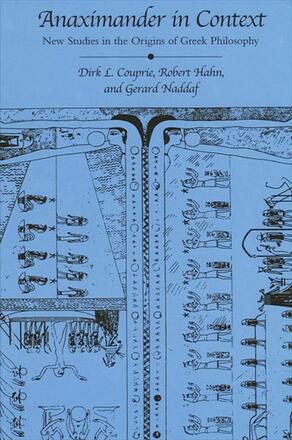
Anaximander in Context
New Studies in the Origins of Greek Philosophy
Alternative formats available from:
Places the development of Anaximander's thought within social, political, cosmological, astronomical, and technological contexts.
Description
Promoting a new, broadly interdisciplinary horizon for future studies in early Greek philosophy, Dirk L. Couprie, Robert Hahn, and Gerard Naddaf establish the cultural context in which Anaximander's thought developed and in which the origins of Greek philosophy unfolded in its earliest stages. In order to better understand Anaximander's achievement, the authors call our attention to the historical, social, political, technological, cosmological, astronomical, and observational contexts of his thought. Anaximander in Context brings to the forefront of modern debates the importance of cultural context, and the indispensability of images to clarify ancient ideologies.
Dirk L. Couprie is an independent researcher and former Associate Professor at the University of Leiden. Robert Hahn is Professor of Philosophy at Southern Illinois University at Carbondale. He is the author of several books, including Anaximander and the Architects: The Contributions of Egyptian and Greek Architectural Technologies to the Origins of Greek Philosophy, also published by SUNY Press. Gerard Naddaf is Professor of Philosophy at York University in Toronto and the author of The Greek Concept of Nature, also published by SUNY Press.